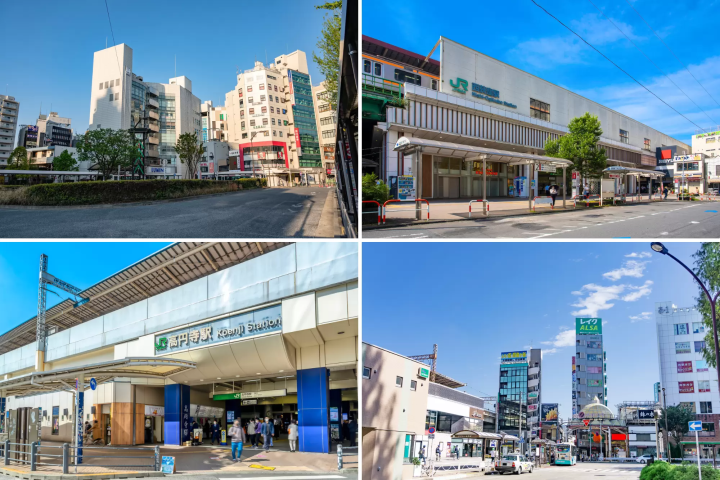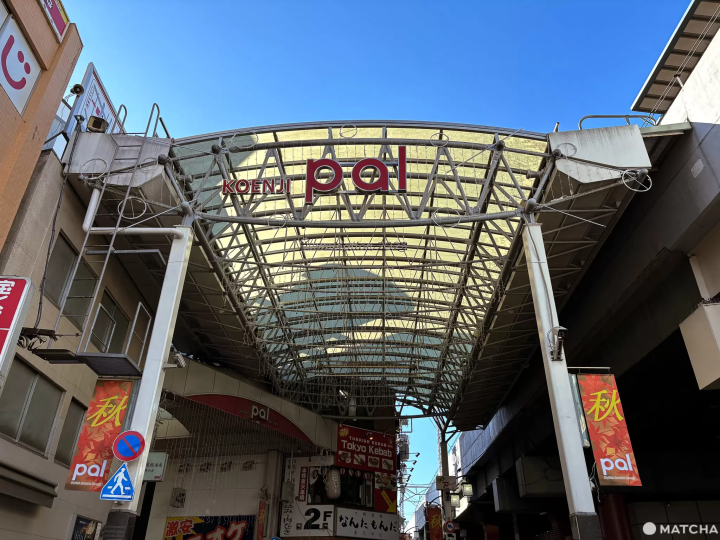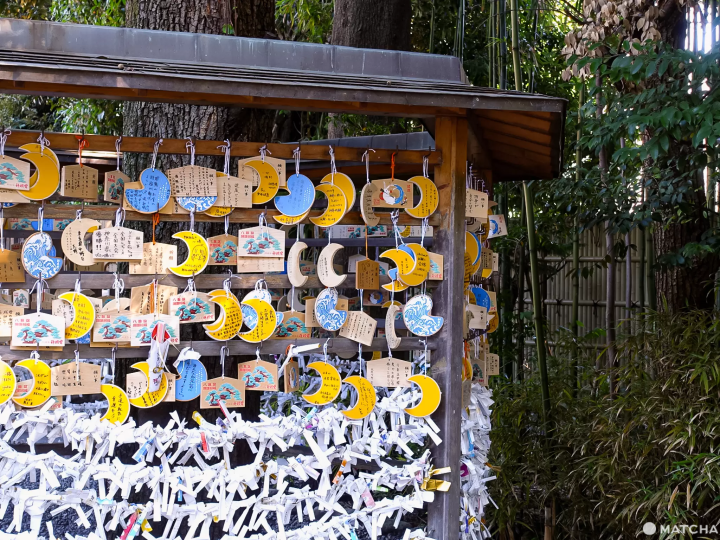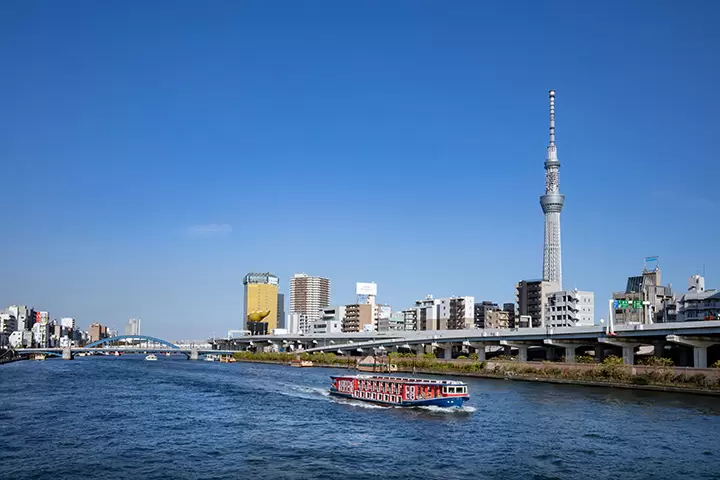Tokyo's Suginami Ward: Dining and Sightseeing Tips From Foreign Residents

Suginami Ward has great accessibility―just ten minutes by train from Shinjuku―and a comfortable living environment. This article features eating and sightseeing spots in the Koenji, Asagaya, Ogikubo, and Nishi-Ogikubo areas suggested by international residents.
Tokyo's Suginami Ward: An Exciting District Just 10 Minutes From Shinjuku

Photos by Pixta
Suginami Ward is located on the west side of Tokyo's 23 wards. It's centered around four stations along the JR Chuo Line: Koenji, Asagaya, Ogikubo, and Nishi-Ogikubo.
It offers a convenient lifestyle and access to the heart of Tokyo. No wonder many international students and families live here. Moreover, it has a population of 570,000 people. Of this total, approximately 17,000 international residents have settled in Suginami―an area with various cultures living in harmony and full of energy.
This district is especially famous for the Tokyo Koenji Awa-Odori Festival. In addition, there are plenty of great sightseeing spots alongside eating and drinking establishments.
In 2023, MATCHA held a round-table discussion attended by three international residents, who are Japanese, American, and Taiwanese, living in Suginami Ward. During this event, they talked about the attractive features and highlights of this area.
This MATCHA article features the round-table discussion. However, today's article introduces some restaurants and sightseeing spots mentioned during that event.
PAL Shopping Street: Supporting Daily Life in Koenji

Coincidentally, the participants in the round-table discussion live near Koenji Station. They usually do everything from shopping to eating and walking on the nearby shopping streets!
Koenji Station opened before World War II. Since then, the station area has gradually flourished.
Even today, one long-established shop that's been in business for a century is still open. Due to developments near the station, there are now several lively shopping streets.

Picture courtesy of Association for the Promotion of Tokyo Koenji Awa-Odori
Among them is the PAL Shopping Street at the southern end of the station. This arcade extends some 250 meters and is lined with about 100 shops. It's also famous for being the site of the Tokyo Koenji Awa-Odori Festival.
The street has several used clothing stores offering various items. According to a local, these stores existed 50 years ago but increased after the arcade was built. In addition, there are now restaurants and select shops.
PAL means buddy or friend. While maintaining a friendly relationship with other shopping streets, PAL Shopping Street jointly holds many large-scale events.
During these events, local schools and nearby residents cooperate, thus deepening community ties. The shopping street has a friendly atmosphere where shop owners become friends with locals and visitors.

PAL Shopping Street is located right next to the south exit of Koenji Station. So whether rain or shine, the arcade is a comfortable place for walking. On your next visit to Koenji, please take in this arcade's special atmosphere!
Asagaya Shinmeigu: A Power Spot for Ms. Moriya (Japan)

Ms. Moriya, one of the participants in the round-table discussion, is a Japanese resident. She mentioned how Asagaya Shinmeigu (Shinto shrine) is one of her favorite local spots.
Asagaya Shinmeigu is just two minutes on foot from the north exit of Asagaya Station.
The shrine and surrounding areas cover some 3,000 tsubo (about 107,000 square feet), making it hard to believe you're in the city's center. Simultaneously, it's the largest spot among shrines related to Tokyo's Ise Jingu.
The shrine precincts are filled with various trees, including evergreen oak, camphor, and ginkgo. You can breathe in the fresh air and admire lush greenery before your eyes.

In Japanese culture, certain ages are considered unlucky, called yakudoshi (*). People in these age groups are encouraged to avoid misfortune and bad luck. Many Japanese people undergo a shrine ceremony to drive away evil spirits.
Asagaya Shinmeigu has a long history as a shrine where a ceremonial prayer (hachinan yoke, or "avoiding the eight disasters") can drive out evil spirits all at once. This is the only shrine in Japan that features this powerful claim. If you are in a yakudoshi year and have the chance to visit Asagaya Shinmeigu, we also recommend experiencing this special ceremony.
*Yakudoshi: Counting in the traditional Japanese way, it refers to men who are 25, 42, and 61 years of age and women 19, 33, 37, and 61 years of age.

At Asagaya Shinmeigu, you can also write down your prayers and wishes on an ema wooden plaque in the shape of the moon. It's said that the deities will grant you your wish by writing your prayers.

In recent years, Asagaya Shinmeigu has charmed many international visitors with its special goshuin stamps and good-luck charm bracelets (kami-musubi).

The photo above displays the 2021 limited-edition goshuin stamps embroidered with hydrangea flowers. Every year, the design changes with each new season.
This special goshuin is an Asagaya Shinmeigu original, combining traditional Japanese crafts of Mino washi paper and embroidery (shishu). When you press the stamp down, a beautiful and sophisticated design appears on the paper's surface. This is a must-have item for goshuin collectors!

In the outlying regions of Japan, the elaborate kami-musubi is said to carry the blessings of the deities and improve your luck. These colorful and beautiful good-luck bracelets can be wrapped around your wrist. Likewise, they can be used to decorate your bag (see photo above).
The name kami-musubi doesn't just refer to the intricately woven strings. It also carries the meaning of "creating a connection with God." The colors are said to be related to Shinmeigu's flowers and plants. Kami-musubi also has seasonal designs!
Neiroya: Ms. Alexandra (America) Loves the Ramen and Shaved Ice!

Speaking of Ogikubo, it's one of Japan's hotly contested areas for ramen shops. Among these, Neiroya is known for being one of the best.
The shop sits quietly along a back alley just off the Kyokai-dori Shopping Street, in front of Ogikubo Station.
The exterior of the shop has a historic feel. The building formerly housed a soba shop, with the letters on the previously used wooden sign now faded.

The shop is located inside a renovated old house, with one of its walls decorated with a large collection of CDs. The owner, a former band member, obviously has a deep love for music. There's also an attractive whiteboard at the back that displays the shop's seasonal menu.
The bright and simple interior actually feels more like a kominka (old folk house) cafe than a ramen shop.

Setouchi Shoyu Ramen, a popular menu item.
At first glance, hot ramen and cold shaved ice seem totally unrelated, but they're both popular menu items!
The shop owner is from Ehime Prefecture and uses many ingredients from the Setouchi Region. In the popular Setouchi Shoyu Ramen, they use a very flavorful soup. The ingredients―from the chicken to the small fish used in the soup stock and the soy sauce―are all sourced from Setouchi.
The noodles don't contain eggs, so people with allergies can have a worry-free dining experience. Plus, the thin noodles are specially ordered from a noodle factory. They have a great taste and pair perfectly with the soup.

Another popular item is the shaved ice (kakigori). Fresh fruit from all regions of Japan are crafted into sauces with care and attention. Then the sauce is sprinkled on top of delicate-as-snow shaved ice. New flavors make their debut each season.
The most famous shaved ice is Japan's first pistachio-flavored kakigori. The rich sauce is made from finely crushed pistachios and has a sweet, smooth taste. When paired with a tart strawberry sauce, it's so delicious you can't stop eating it.
As a dish offering "a satisfaction level exceeding the price," this pistachio-flavored shaved ice was selected as a Michelin Bib Gourmand for two consecutive years. It's also attracting the attention of many international visitors.
French curry SPOON: Ms. Chen (Taiwan)'s Favorite Curry

Nishi-Ogikubo, home to many famous restaurants, is a frequent destination for Tokyo connoisseurs. There are many well-known curry shops, one of those being French curry SPOON.
Some people might be wondering, "Is there actually a thing called curry rice in France?" But this original cuisine was developed by a French-trained chef who combines French cooking with curry rice―a Japanese homemade dish.

Special French Curry, a popular menu item.
The popular menu item is the Special French Curry. This health-conscious dish uses a sauce containing 13 different spices and seasonal vegetables that are slowly simmered.
The beef simply melts in your mouth when you take a bite. It's also slowly cooked in red wine and has a French-like flavor.
You can also top your dish with a soft-boiled egg. There's a cascade of different flavors inside your mouth, making it even more delicious.
There are always long lines outside this highly popular shop.

Lassi is a homemade yogurt drink, and the one made here has a rich flavor that's different from other curry shops. After eating some spicy curry, it will cleanse your palate. By occasionally taking a sip during your meal, you can enjoy the tasty flavor of the curry again.
Hop on the JR Chuo Line to Visit Koenji, Asagaya, Ogikubo, and Nishi-Ogikubo!
Tokyo's Suginami Ward has many famous restaurants and historical sightseeing spots, in and around the areas of Koenji, Asagaya, Ogikubo, and Nishi-Ogikubo. Additionally, visitors can enjoy many festivals and special events year-round.
There are many attractive spots in addition to the ones featured in this article. We are eagerly waiting for your discoveries!
Read also
Main image courtesy of PIXTA
Written by 咖啡星人秋桑
In cooperation with PAL Shopping Street, Asagaya Shinmeigu, Neiroya, French curry SPOON
Sponsored by Chuosen Aruaru Project/Experience SUGINAMI TOKYO
MATCHA's promotional account for corporate and local government advertising. We aim to provide useful information to our readers in an enjoyable manner.





































